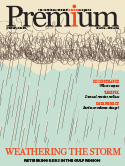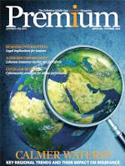USD116 bn for insured nat cat losses in 2021
Insured losses from major natural catastrophes in 2021 – excluding Covid-related losses – have so far reached roughly USD116 billion, the third largest total since 2011, and about 63 percent higher than the average loss of USD71 billion since 2011. The total was driven by a series of extreme weather-related events in the US, and the second most severe flood event ever experienced in Europe. Like the peak insured natural-catastrophe loss years of 2017 (USD143 billion) and 2011 (USD120 billion), multiple events are responsible for the large losses, according to the Summary of Natural Catastrophe Events 2021, published by Gallagher Re.
Tropical cyclones caused 35 percent of the overall loss, and severe thunderstorms 25 percent. North America was responsible for 68 percent, and Europe, the Middle East, and Africa 23 percent. The largest single loss event was Hurricane Ida in August, which cost insurers roughly USD37 billion.
2021 was marked by the occurrence of several unusual mid-sized catastrophe events. These included winter storms which affected the southern US in February, including some states which do not typically see extended periods of cold weather. The anomalous events were likely caused by a strong negative Artic Oscillation. Later winter storms affected much of the contiguous US, and severe convective storms hit the Midwest in December.
With 21 named storms, the North Atlantic hurricane season was the third most active on record, the sixth consecutive above-normal year, and the second consecutive year when NOAA’s bank of 21 of storm names was exhausted.
In Europe, the largest loss-causing event came in mid-July with Storm Bernd causing more than USD13 billion in insured losses. The highlight of the year for Latin America and the Caribbean was the absence of significant insured catastrophe events, and Asia’s 2021 cyclone season saw no single typhoon make landfall in Japan.





































